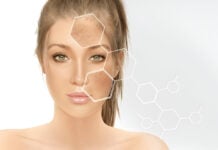Climate change isn’t just about melting glaciers or endangered animals anymore. It’s something that’s starting to affect us up close and personal, right down to our skin. Our skin is the largest organ of the body and acts as a barrier between us and the environment. But with shifting weather patterns, rising temperatures, and increased pollution, it’s facing challenges that many of us might not realize.
Let’s talk about how climate change is changing the way our skin behaves and what we can do to keep it healthy in this new reality.
Hotter Days and Stronger Sunlight
You’ve probably noticed summers seem hotter and longer than before. This isn’t just uncomfortable. It means our skin is getting hit with more ultraviolet (UV) radiation than ever. Because of changes in the ozone layer, more UV rays are reaching us, and that’s a big deal because UV exposure is one of the main reasons we get sunburns, wrinkles, and even skin cancer (Diffey, 2018; Narayanan, Saladi, & Fox, 2010).
What’s tricky is that even if it’s cloudy or you’re just running errands, those harmful rays are still there. So, the sunscreen habit isn’t just for beach days anymore. It’s something we need to consider daily.
Pollution in the Air We Breathe (and the Skin We Wear)
Climate change also makes pollution worse. Wildfires, traffic smog, and other sources pump more tiny particles into the air, which settle on our skin and cause damage. These pollutants create something called oxidative stress, which breaks down the proteins that keep our skin firm and smooth (Vierkötter et al., 2010; Kim et al., 2019).
If you live in a busy city, chances are your skin feels this impact more strongly. Dark spots, irritation, and even faster aging can result from living in polluted environments that are intensified by climate changes.
Weather Whiplash: Dry, Wet, and Everything In Between
One day it might be sweltering and dry, and the next, torrential rain and flooding. These extreme weather swings are more common now and can wreak havoc on your skin.
Heat waves often mean sweat and irritation, such as heat rashes or flare-ups of eczema or psoriasis (Liu et al., 2020). Dry spells zap your skin’s moisture, making it flaky and cracked, which leaves it vulnerable to infections.
Flooding is another problem. When skin is exposed to dirty water for too long, fungal infections and dermatitis can develop, especially if you don’t have easy access to clean water and hygiene products (Schmid-Wendtner & Korting, 2006). This is especially concerning for people displaced by floods or living in high-risk areas.
Stress: The Invisible Skin Agitator
Climate change also affects us mentally, and that stress shows up on our skin. Worrying about the environment, experiencing extreme weather events, or simply feeling overwhelmed can increase anxiety and depression (Clayton et al., 2017).
Stress hormones disrupt the skin’s ability to protect and repair itself. That’s why flare-ups of acne, eczema, or psoriasis often get worse during stressful times (Kim et al., 2017). Taking care of our mental health is just as important as applying moisturizer.
Who’s Most at Risk?
Not everyone feels these effects the same way. Kids, older adults, people with sensitive skin or existing skin problems, and outdoor workers tend to bear the brunt of climate-related skin damage (Wang & Xu, 2019).
Also, people with darker skin tones can experience unique challenges like pigment changes or increased heat sensitivity, which means they might need different skincare approaches (Taylor, 2018).
Practical Tips to Protect Your Skin
While we all hope for bigger changes on the global stage to combat climate change, here are some simple ways to care for your skin right now:
- Make sunscreen a daily habit, no matter the weather.
- Moisturize regularly to strengthen your skin’s barrier against pollution and dryness.
- Try to stay indoors or in the shade during peak sun hours, usually between 10 a.m. and 4 p.m.
- Use antioxidants found in serums or foods to fight skin-damaging free radicals.
- Drink plenty of water to keep your skin hydrated.
- Manage stress with mindfulness, exercise, or activities you enjoy.
Our skin tells the story of the world around us, and right now, it’s reflecting the impacts of a changing climate. From stronger sun rays and polluted air to extreme weather and stress, the environment is shifting, and our skincare routines need to shift with it.
By understanding these changes and adapting our habits, we not only protect our skin but also honor the deep connection between our bodies and the planet. After all, healthy skin is a sign of a healthy you and a healthy Earth.
References
- Clayton, S., Manning, C., Krygsman, K., & Speiser, M. (2017). Mental health and our changing climate: Impacts, implications, and guidance. American Psychological Association and ecoAmerica. https://www.apa.org/news/press/releases/2017/03/mental-health-climate.pdf
- Diffey, B. L. (2018). Climate change, ozone depletion and the impact on ultraviolet exposure of human skin. Physiological Measurement, 39(5), 05TR01. https://doi.org/10.1088/1361-6579/aabc31
- Kim, K. E., Cho, D., Park, H. J., & Lee, J. H. (2019). Air pollution and skin diseases: Adverse effects of airborne particulate matter on various skin diseases. Life Sciences, 221, 311–319. https://doi.org/10.1016/j.lfs.2019.01.017
- Kim, J., Kim, B. E., Leung, D. Y. M. (2017). Pathophysiology of atopic dermatitis: clinical implications. Allergy, Asthma & Immunology Research, 9(5), 361-371. https://doi.org/10.4168/aair.2017.9.5.361
- Liu, B., Zhang, X., Qiu, H., Zhang, J., & Wang, W. (2020). The impact of extreme heat events on skin diseases: a systematic review. International Journal of Environmental Research and Public Health, 17(7), 2444. https://doi.org/10.3390/ijerph17072444
- Narayanan, D. L., Saladi, R. N., & Fox, J. L. (2010). Ultraviolet radiation and skin cancer. International Journal of Dermatology, 49(9), 978-986. https://doi.org/10.1111/j.1365-4632.2010.04588.x
- Schmid-Wendtner, M. H., & Korting, H. C. (2006). The pH of the skin surface and its impact on the barrier function. Skin Pharmacology and Physiology, 19(6), 296-302. https://doi.org/10.1159/000094070
- Taylor, S. C. (2018). Skin of color: Biology, structure, function, and implications for dermatologic disease. Journal of the American Academy of Dermatology, 78(1), S6-S12. https://doi.org/10.1016/j.jaad.2017.09.056
- Vierkötter, A., Schikowski, T., Ranft, U., Sugiri, D., Matsui, M., Kramer, U., & Krutmann, J. (2010). Airborne particle exposure and extrinsic skin aging. Journal of Investigative Dermatology, 130(12), 2719–2726. https://doi.org/10.1038/jid.2010.153
- Wang, S., & Xu, J. (2019). Vulnerable populations and environmental health. Journal of Environmental Health Science and Engineering, 17(1), 61-70. https://doi.org/10.1007/s40201-019-00361-0












